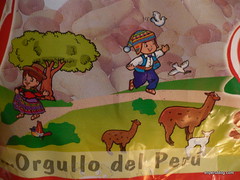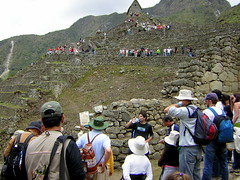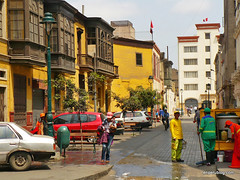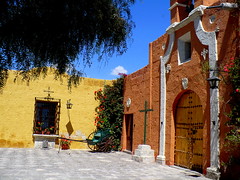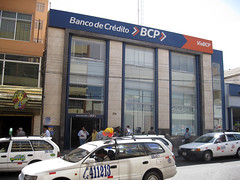Could the streets of Lima be on the verge of changing forever?
The year is 2010. It’s, let’s say, December, and the start of summer in the southern hemisphere and in the city of Lima.
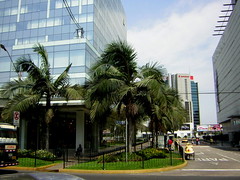 Stepping out into the street, a family decides they will walk the 20 minutes to the Costa Verde, taking time to enjoy the city’s clean fresh air. Others live further away of course, so the streets are as full of traffic, including buses and taxis, as always. But apart from the gentle hum of the motors – many of which belong to hybrid cars – the streets are quiet. The combis weave in and out of the hybrids, in a rush to reach the next authorised bus stop to pick up and drop off passengers.
Stepping out into the street, a family decides they will walk the 20 minutes to the Costa Verde, taking time to enjoy the city’s clean fresh air. Others live further away of course, so the streets are as full of traffic, including buses and taxis, as always. But apart from the gentle hum of the motors – many of which belong to hybrid cars – the streets are quiet. The combis weave in and out of the hybrids, in a rush to reach the next authorised bus stop to pick up and drop off passengers.
For the first time, such a future in Lima is entirely plausible.
Clean Air
The city currently suffers one of the world’s worst levels of air quality – despite recent small improvements. The problem is not only caused by ageing vehicles, especially public transport, belching out thick black smoke. Nor is it only due to the hundreds of thousands of empty taxis circling the streets at any one time looking for fares. Nature also conspires to lower air quality by keeping the air humid and the sky overcast 6 months a year, then surrounding the city with mountains that hold everything, including the pollution, fixed in place.
But hopefully, the things that we can control may now be about to change. Last year a new device was announced, the result of Peruvian ingenuity and design, that cleans air in polluted urban areas.
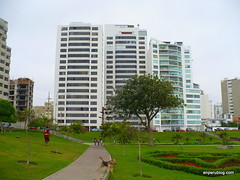 Produced by Tierra Nuestra S.A.C., the device sucks in 8,340 m3 of air per hour, trapping dangerous particles in water, before expelling the cleansed air once more. The device is fairly cheap to run and requires only a little water. Placed alongside highways, junctions and factories, the manufacturers claim each machine can do the work of 1,200 trees plus removed the dust from the air that generally coats the city, slowly turning everything black.
Produced by Tierra Nuestra S.A.C., the device sucks in 8,340 m3 of air per hour, trapping dangerous particles in water, before expelling the cleansed air once more. The device is fairly cheap to run and requires only a little water. Placed alongside highways, junctions and factories, the manufacturers claim each machine can do the work of 1,200 trees plus removed the dust from the air that generally coats the city, slowly turning everything black.
The first unit was placed in the district of Surquillo, on the junction of Angamos Este and Aviación. The unit that costs $100,000 to build and $6.50 to operate each day was placed there thanks to the efforts of sponsors from the private sector, with the mayor of Surquillo proudly stated that the municipal government contributed nothing to setting up of the machine. He should instead be looking to find the money to roll them out across his district, and proudly contributing to the population’s quality of life.
Quiet Streets
While vehicles may still be belching out clouds of black smoke, the tide may have turned against the irritating horn culture. According to the nation’s transport and communications ministry, it is already an offence to use the car horn in any circumstance other than to “avoid imminent danger“. The law is just not enforced by the police (like most laws).
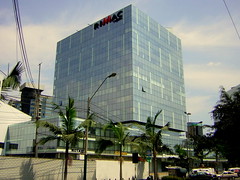 So, the district of Miraflores has decided to take on the issue themselves. So that drivers can gently get used to having to obey this law, the offenders – mostly public transport drivers, but also idiots that think a long series of beeps will change a traffic light to green or make congested streets clear faster – will be informed of their offence.
So, the district of Miraflores has decided to take on the issue themselves. So that drivers can gently get used to having to obey this law, the offenders – mostly public transport drivers, but also idiots that think a long series of beeps will change a traffic light to green or make congested streets clear faster – will be informed of their offence.
Once used to the idea of being calm and quiet, drivers who continue breaking the law, just one of many they were supposed to learn about in order to get a driver’s licence, will be fined S./71 or about 15% of a monthly minimum wage.
Hopefully the idea will spread across the city.
Clean Cars
Peru has a long history of heavily taxing new car imports. When a new car in Peru costs double what it does elsewhere in the world its not surprising that people hold on to their older less-efficient more-polluting cars for longer.
With the increase in general wealth in recent years, newer vehicles have been arriving in greater numbers, with SUVs seen as a modern Peruvian status symbol. In lower socio-economic levels, there has also been a change. The huge hikes in fuel price we saw in 2008 forced many taxi drivers to convert their vehicles to a cheaper domestic fuel source in the form of natural gas. This was said to be behind the recent improvement in Lima’s air quality.
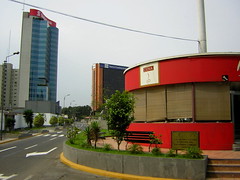 With the signing of the Free Trade Agreement with the United States, Peru couldn’t afford to get rid of its massive car import taxes over night. This is something that according to the details of the agreement will fade out over the next ten years, allowing cleaner newer cars to be imported more cheaply – including as yet unaffordable hybrid cars, which in a country like Peru would be highly in demand, just as Natural Gas vehicles have proven to be.
With the signing of the Free Trade Agreement with the United States, Peru couldn’t afford to get rid of its massive car import taxes over night. This is something that according to the details of the agreement will fade out over the next ten years, allowing cleaner newer cars to be imported more cheaply – including as yet unaffordable hybrid cars, which in a country like Peru would be highly in demand, just as Natural Gas vehicles have proven to be.
Orderly transport
Something that is already controlled with greater vigour is the locations where buses are allowed to stop. Not so long ago it was common to hop on and off a bus at which ever corner you pleased. Buses would stop, blocking traffic and crossings, so that passengers could be collected. This is starting to change, and “no es paradero”, which means “this is not a bus stop”, is something you hear more and more from the mouths public transport operators.
Step by step, the culture is changing.
Tags: air quality, avenida aviacion, combis, free trade, horn, noise, pollution, surquillo, traffic



